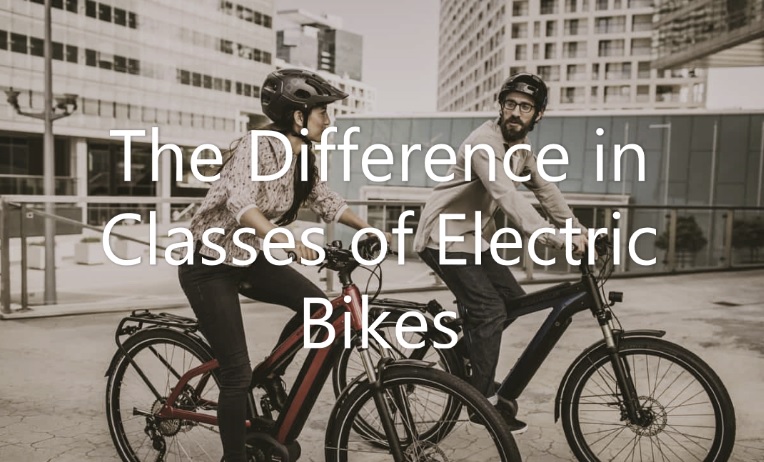Electric Bikes Classes

E-bikes, also known as e-bikes, have gained popularity for their versatility and the ease of cycling they offer. However, not all electric bikes are created equal. In many jurisdictions, e-bikes are divided into classes based on their top assisted speed and how their electric motor operates. Understanding these electric bikes classes is key to finding the right e-bike for your needs and ensuring you are using your e-bike legally and safely.
Classifying E-Bikes: The Basics
In several places, such as the United States and the European Union, e-bikes are categorized into three classes. Each class is defined by two crucial factors: the maximum motor-assisted speed the bike can reach and whether the electric motor assists only when the rider is pedaling or can power the bike independently.
Here is a quick summary of the E-Bike classes:
| Class | Speed | Motor Power | Pedal Assistance | Use Case |
|---|---|---|---|---|
| Class 1 | Up to 20 mph | Up to 750W | Yes | Commuting, casual riding, bike paths, city exploration |
| Class 2 | Up to 20 mph | Up to 750W | Yes | Commuting, casual riding, bike paths, city exploration |
| Class 3 | Up to 28 mph | Up to 750W | Yes | Commuting, fitness riding, road biking, urban commuting |
Let’s delve into each class in detail.
Electric Bikes Class 1: Pedal-Assist Only
Class 1 e-bikes are pedal-assist bikes, also known as pedelecs. The motor provides assistance only when the rider is actively pedaling, and the assistance cuts out when the bike reaches a maximum speed of 20 mph. This class of e-bike mimics the feel of traditional cycling but with a boost, making it ideal for those who want an authentic biking experience with a little extra push.
They are suitable for riders who primarily use their bikes for commuting, casual riding, bike paths, and city exploration. They provide pedal assistance up to 20 mph and are a good option for riders who want some assistance while pedaling but still enjoy the traditional cycling experience.
Pros
- Class 1 e-bikes provide a more natural biking experience.
- They are allowed on most trails and bike paths where traditional bikes are permitted.
Cons
- Riders must be pedaling to get assistance from the motor.
- Limited to a maximum speed of 20 mph with motor assistance.
Electric Bikes Class 2: Throttle and Pedal-Assist
Class 2 e-bikes offer motor assistance up to 20 mph, similar to Class 1. However, the distinguishing feature of Class 2 e-bikes is that they can be operated through a throttle without the need for pedaling. This feature makes Class 2 e-bikes a versatile choice, especially for those who might want to take a break from pedaling now and then.
Class 2 e-bikes are suitable for riders who have similar preferences to Class 1 but also want the option of using a throttle. This feature allows riders to engage the motor without pedaling, which can be helpful in situations where pedaling may be challenging or for riders who want an extra boost of power.
Pros
- The throttle feature offers flexibility, providing assistance even when not pedaling.
- Like Class 1, they can be used in most places where traditional bikes are allowed.
Cons
- They may not offer as natural a biking experience as Class 1 e-bikes.
- Some trails or paths may restrict the use of throttle-operated e-bikes.
Electric Bikes Class 3: Speed Pedelecs
Class 3 e-bikes, also known as speed pedelecs, provide assistance only when the rider is pedaling, similar to Class 1. However, they differ in the maximum speed the motor will assist up to, which is 28 mph. Class 3 e-bikes are designed for those who desire a faster commuting option without the need for a car or public transportation.
Riders who are looking for a bit more speed and performance may prefer Class 3 e-bikes. With pedal assistance up to 28 mph, these bikes are suitable for commuting, fitness riding, road biking, and urban commuting. They offer a faster and more efficient riding experience while still providing pedal-assisted assistance.
Pros
- They offer a higher assisted speed, up to 28 mph, making them ideal for commuting.
- They provide a good workout due to the required pedaling.
Cons
- Class 3 e-bikes are often subject to more restrictions than Class 1 and Class 2.
- They may not be permitted on certain trails and bike paths.
The Importance of Understanding E-Bike Classes
Knowing the class of your e-bike isn’t just crucial for choosing the bike that fits your needs. It’s also important for understanding where you can legally ride your e-bike. Different states and jurisdictions may have varying regulations regarding e-bike usage. Some trails, for example, may only permit Class 1 e-bikes.
Furthermore, in some areas, different classes of e-bikes may require different types of equipment, such as helmets or lights, or have different minimum age requirements. Always check the local regulations in your area to ensure you’re using your e-bike legally and safely.
Conclusion: Electric Bikes Classes
The classification of e-bikes can help you choose the best e-bike for your needs and ensure that you’re aware of any local regulations that may apply. Whether you’re looking for a bike to help with your commute, to boost your fitness, or to allow you to enjoy cycling without over-exerting yourself, there’s an e-bike class to suit you. As always, be sure to do your research before making a purchase, and happy cycling!
